RECENT ARTICLES
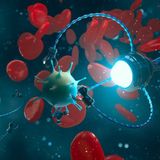
Not bot, not beast: Scientists create first ever living, programmable organism
January 20, 2020by Simon Coghlan and Kobi Leins,A remarkable combination of artificial intelligence (AI) and biology has produced the world's first "living robots".This week, a research team of roboticists and scientists their recipe for making a new lifeform called xenobots from . The term "xeno" comes from the frog cells (Xenopus laevis) used to make them.One of the researchers as "neither a traditional robot nor a known species of animal", but a "new class of artifact: a living, programmable organism".Xenobots are less than 1mm long and made of 500-1000 living cells. They have various...…January 20, 2020by Simon Coghlan and Kobi Leins,A remarkable combination of artificial intelligence (AI) and biology has produced the world's first "living robots".This week, a research team of roboticists and scientists their recipe for making a new lifeform called xenobots from . The term "xeno" comes from the frog cells (Xenopus laevis) used to make them.One of the researchers as "neither a traditional robot nor a known species of animal", but a "new class of artifact: a living, programmable organism".Xenobots are less than 1mm long and made of 500-1000 living cells. They have various...WW…
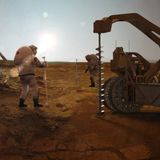
Could life exist deep underground on Mars?
September 23, 2020byRecent science missions and results are bringing the search for life closer to home, and scientists at the Center for Astrophysics | Harvard & Smithsonian (CfA) and the Florida Institute of Technology (FIT) may have figured out how to determine whether life is—or was—lurking deep beneath the surface of Mars, the Moon, and other rocky objects in the universe.While the search for life typically focuses on water found on the and in the atmosphere of objects, Dr. Avi Loeb, Frank B. Baird Jr. Professor of Science at Harvard and CfA astronomer, and Dr. Manasvi Lingam,...…September 23, 2020byRecent science missions and results are bringing the search for life closer to home, and scientists at the Center for Astrophysics | Harvard & Smithsonian (CfA) and the Florida Institute of Technology (FIT) may have figured out how to determine whether life is—or was—lurking deep beneath the surface of Mars, the Moon, and other rocky objects in the universe.While the search for life typically focuses on water found on the and in the atmosphere of objects, Dr. Avi Loeb, Frank B. Baird Jr. Professor of Science at Harvard and CfA astronomer, and Dr. Manasvi Lingam,...WW…
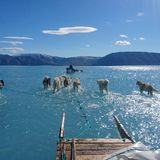
Arctic summer sea ice second lowest on record: US researchers
September 21, 2020by Ivan Couronne With Pia Ohlin In StockholmArctic summer sea ice melted in 2020 to the second smallest size since records began 42 years ago, US scientists announced Monday, offering further stark evidence of the impact of global warming.Arctic sea ice melts in summer and reforms in winter, but precise satellite imagery taken regularly since 1979 documented how the cycle has been shrinking significantly.The year's minimum was reached on September 15, at 3.74 million square kilometers (1.44 million square miles), according to preliminary date from scientists at the...…September 21, 2020by Ivan Couronne With Pia Ohlin In StockholmArctic summer sea ice melted in 2020 to the second smallest size since records began 42 years ago, US scientists announced Monday, offering further stark evidence of the impact of global warming.Arctic sea ice melts in summer and reforms in winter, but precise satellite imagery taken regularly since 1979 documented how the cycle has been shrinking significantly.The year's minimum was reached on September 15, at 3.74 million square kilometers (1.44 million square miles), according to preliminary date from scientists at the...WW…
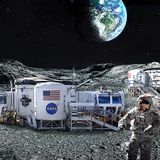
Pursuing the future of lunar habitation
May 5, 2020by Brian Huchel,Shirley Dyke doesn't see the moon as a crater-covered sphere. She expects lunar dwellings to begin emerging in a decade, helping reach out to further space habitation.And she wants her research to help bridge that gap.Dyke, head of Purdue University's RETH (Resilient ExtraTerrestrial Habitats) Institute, says her research focuses on enabling the future."I'm not one who seeks to design the best something," said Dyke, a professor of mechanical and civil engineering. "I aim to bring together smart people from to pursue goals that would not be possible otherwise. In...…May 5, 2020by Brian Huchel,Shirley Dyke doesn't see the moon as a crater-covered sphere. She expects lunar dwellings to begin emerging in a decade, helping reach out to further space habitation.And she wants her research to help bridge that gap.Dyke, head of Purdue University's RETH (Resilient ExtraTerrestrial Habitats) Institute, says her research focuses on enabling the future."I'm not one who seeks to design the best something," said Dyke, a professor of mechanical and civil engineering. "I aim to bring together smart people from to pursue goals that would not be possible otherwise. In...WW…
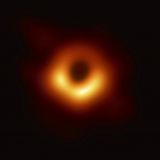
New technology is a 'science multiplier' for astronomy
September 21, 2020byFederal funding of new technology is crucial for astronomy, according to results of a study released Sept. 21 in the Journal of Astronomical Telescopes, Instruments and Systems.The study tracked the long-term impact of early seed funding obtained from the National Science Foundation. Many of the key advances in astronomy over the past three decades benefited directly or indirectly from this early seed funding.Over the past 30 years, the NSF Advanced Technologies and Instrumentation program has supported astronomers to develop new ways to study the universe. Such devices...…September 21, 2020byFederal funding of new technology is crucial for astronomy, according to results of a study released Sept. 21 in the Journal of Astronomical Telescopes, Instruments and Systems.The study tracked the long-term impact of early seed funding obtained from the National Science Foundation. Many of the key advances in astronomy over the past three decades benefited directly or indirectly from this early seed funding.Over the past 30 years, the NSF Advanced Technologies and Instrumentation program has supported astronomers to develop new ways to study the universe. Such devices...WW…
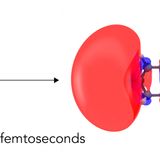
First direct look at how light excites electrons to kick off a chemical reaction
May 1, 2020by Glennda Chui,The first step in many light-driven chemical reactions, like the ones that power photosynthesis and human vision, is a shift in the arrangement of a molecule's electrons as they absorb the light's energy. This subtle rearrangement paves the way for everything that follows and determines how the reaction proceeds.Now scientists have seen this first step directly for the first time, observing how the molecule's electron cloud balloons out before any of the in the molecule respond.While this response has been predicted theoretically and detected indirectly, this is...…May 1, 2020by Glennda Chui,The first step in many light-driven chemical reactions, like the ones that power photosynthesis and human vision, is a shift in the arrangement of a molecule's electrons as they absorb the light's energy. This subtle rearrangement paves the way for everything that follows and determines how the reaction proceeds.Now scientists have seen this first step directly for the first time, observing how the molecule's electron cloud balloons out before any of the in the molecule respond.While this response has been predicted theoretically and detected indirectly, this is...WW…
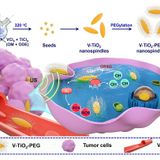
Tiny nanospindles enhance use of ultrasound to fight cancer
December 8, 2020byUltrasound can be used to treat cancer when used in combination with molecules that sensitize the system to sound waves. These sonosensitizers generate toxic reactive oxygen species that attack and kill tumor cells.In Applied Physics Reviews, scientists from Soochow University in China report a new type of sonosensitizer based on a vanadium-doped titanium dioxide, V-TiO2, that enhances the amount of damage ultrasound inflicts on tumors. Studies in mice showed that tumor growth was markedly suppressed when compared to a .Organic molecules have been used in the past as...…December 8, 2020byUltrasound can be used to treat cancer when used in combination with molecules that sensitize the system to sound waves. These sonosensitizers generate toxic reactive oxygen species that attack and kill tumor cells.In Applied Physics Reviews, scientists from Soochow University in China report a new type of sonosensitizer based on a vanadium-doped titanium dioxide, V-TiO2, that enhances the amount of damage ultrasound inflicts on tumors. Studies in mice showed that tumor growth was markedly suppressed when compared to a .Organic molecules have been used in the past as...WW…
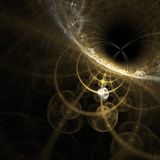
Researchers see path to quantum computing at room temperature
May 1, 2020byArmy researchers predict quantum computer circuits that will no longer need extremely cold temperatures to function could become a reality after about a decade.For years, solid-state quantum technology that operates at room temperature seemed remote. While the application of transparent crystals with had emerged as the most likely route to this milestone, the plausibility of such a system always remained in question.Now, Army scientists have officially confirmed the validity of this approach. Dr. Kurt Jacobs, of the U.S. Army Combat Capabilities Development Command's Army...…May 1, 2020byArmy researchers predict quantum computer circuits that will no longer need extremely cold temperatures to function could become a reality after about a decade.For years, solid-state quantum technology that operates at room temperature seemed remote. While the application of transparent crystals with had emerged as the most likely route to this milestone, the plausibility of such a system always remained in question.Now, Army scientists have officially confirmed the validity of this approach. Dr. Kurt Jacobs, of the U.S. Army Combat Capabilities Development Command's Army...WW…
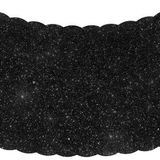
Astronomers publish map showing 25,000 supermassive black holes
February 19, 2021byAn international team of astronomers has published a map of the sky showing over 25,000 supermassive black holes. The map, to be published in the journal Astronomy & Astrophysics, is the most detailed celestial map in the field of so-called low radio frequencies. The astronomers, including Leiden astronomers, used 52 stations with LOFAR antennas spread across nine European countries.Stars or black holes?To an untrained eye, the sky map appears to contain thousands of stars, but they are actually . Each black hole is located in a different, distant galaxy. The...…February 19, 2021byAn international team of astronomers has published a map of the sky showing over 25,000 supermassive black holes. The map, to be published in the journal Astronomy & Astrophysics, is the most detailed celestial map in the field of so-called low radio frequencies. The astronomers, including Leiden astronomers, used 52 stations with LOFAR antennas spread across nine European countries.Stars or black holes?To an untrained eye, the sky map appears to contain thousands of stars, but they are actually . Each black hole is located in a different, distant galaxy. The...WW…
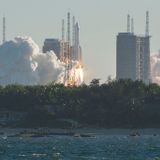
NASA chief warns Congress about Chinese space station
September 24, 2020NASA chief Jim Bridenstine told lawmakers Wednesday it was crucial for the US to maintain a presence in Earth's orbit after the International Space Station is decommissioned so that China does not gain a strategic advantage.The first parts of the ISS were launched in 1998 and it has been continuously lived in since 2000.The , which serves as a science lab and is a partnership between the US, Russia, Japan, Europe and Canada, is currently expected to be operated until 2030."I'll tell you one thing that has me very concerned—and that is that a day is coming when the...…September 24, 2020NASA chief Jim Bridenstine told lawmakers Wednesday it was crucial for the US to maintain a presence in Earth's orbit after the International Space Station is decommissioned so that China does not gain a strategic advantage.The first parts of the ISS were launched in 1998 and it has been continuously lived in since 2000.The , which serves as a science lab and is a partnership between the US, Russia, Japan, Europe and Canada, is currently expected to be operated until 2030."I'll tell you one thing that has me very concerned—and that is that a day is coming when the...WW…